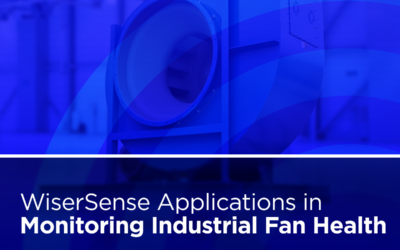
Cloud Based Maintenance and Energy Management with WiserSense Solutions
“Failure” carries the opposite meaning of success, signifying the inability to achieve a desired or intended goal or outcome.
What cannot be measured cannot be improved…
With the advancement of technology, we encounter various software solutions every day. The development of cloud technology has led to cloud-based software playing a crucial role in facilities. This trend is expected to rapidly expand in the near future. Cloud-based software can be accessed and utilized from anywhere in the world via the internet, free of charge.
Cloud-based technologies are also significant in terms of “Cloud Asset Management” (CloudAssetManagement).
What is Cloud Asset Management?
Cloud Asset Management enables you to instantly check status of your equipment in your business from anywhere in the world and perform operations on that equipment securely.
Benefits of Cloud Asset Management:
Security: One of the major advantages of cloud asset management is providing security.
Time Savings: Businesses can easily track their assets through asset management.
Inventory Accuracy: Another advantage of cloud asset management is the ability to quickly access assets in the cloud environment. Cloud Asset Management collects all inventory information and helps make informed decisions about asset management. Therefore, businesses make improvements in the right areas, prevent extra expenses, and save time and costs.
Asset Data: Asset information is important for the efficient use of assets. When businesses obtain information about their assets, they can make decisions easily. Thus, companies track their assets in the cloud environment and make the right moves at the right time.
Cloud Asset Management with WiserSense:
Efficiency and Monitoring: Cloud-based asset management platforms allow you to monitor the status and performance of your assets from a central location. WiserSense, on the other hand, monitors machine health through smart sensors and data analytics. This combination enables you to monitor the status and performance of your assets more effectively and increase efficiency.
Development of Maintenance Strategies: The combination of cloud asset management and WiserSense enables you to develop better maintenance strategies through data analytics and machine learning. As a result, you can optimize preventive maintenance processes and reduce the risk of failures.
Data Integration and Analysis: Cloud-based asset management platforms can often integrate with other systems through open APIs. By integrating the data provided by WiserSense with these platforms, you can conduct comprehensive data analysis and evaluate asset performance more deeply.
Remote Monitoring and Management: When cloud asset management and WiserSense come together, you can monitor and manage your assets remotely. This can help field personnel use their resources more effectively and reduce operational costs.
Cloud-Powered Energy Savings: Revolutionizing Sustainable Energy Management
In the ever-evolving landscape of energy efficiency and sustainability, the role of cloud computing technology, aptly termed “Cloud-Powered Energy Savings,” is gaining prominence. This approach introduces a paradigm shift in energy management, leveraging the capabilities of cloud-based solutions for optimal resource utilization.

- Cloud-Based Energy Monitoring Systems
Cloud-based energy monitoring systems empower organizations with real-time insights into energy consumption patterns. By tracking energy usage, these systems facilitate the identification of potential areas for optimization and efficiency enhancement.
- Optimizing Energy Consumption with Cloud Analytics
Cloud analytics, utilizing technologies such as big data analysis and machine learning, plays a pivotal role in optimizing energy consumption. Through advanced data analytics, businesses can enhance energy efficiency, resulting in cost savings.
- Cloud Integration for Smart Grids
Smart grids, integrated with cloud computing, enhance the efficiency of energy distribution. This integration facilitates intelligent management of energy resources, contributing to the establishment of a sustainable energy infrastructure.
- Remote Energy Management using Cloud Platforms
Cloud platforms offer flexibility in remote energy management and control. This capability enables businesses to monitor and manage energy consumption remotely, contributing to significant energy savings.
- Data-Driven Insights for Energy Efficiency in the Cloud
Data-driven insights, facilitated by cloud-based solutions, provide valuable information for optimizing energy efficiency. Big data analytics allows businesses to understand and act upon energy usage patterns effectively.
- Cloud-Based Predictive Maintenance for Energy Systems
Cloud-based predictive maintenance contributes to the reliability and efficiency of energy systems. This approach identifies potential issues before they escalate, enabling preventive maintenance and minimizing downtime.
In Conclusion
The “Cloud-Powered Energy Savings” approach stands as a powerful tool for making energy management more intelligent and sustainable. By harnessing the potential of cloud computing technology, organizations can not only reduce costs but also mitigate their environmental impact. This marks a significant stride towards a more sustainable energy infrastructure in the future. As we embrace cloud-based solutions, the journey towards efficient and sustainable energy practices continues to evolve.
Zekeriya Tosun



0 Comments